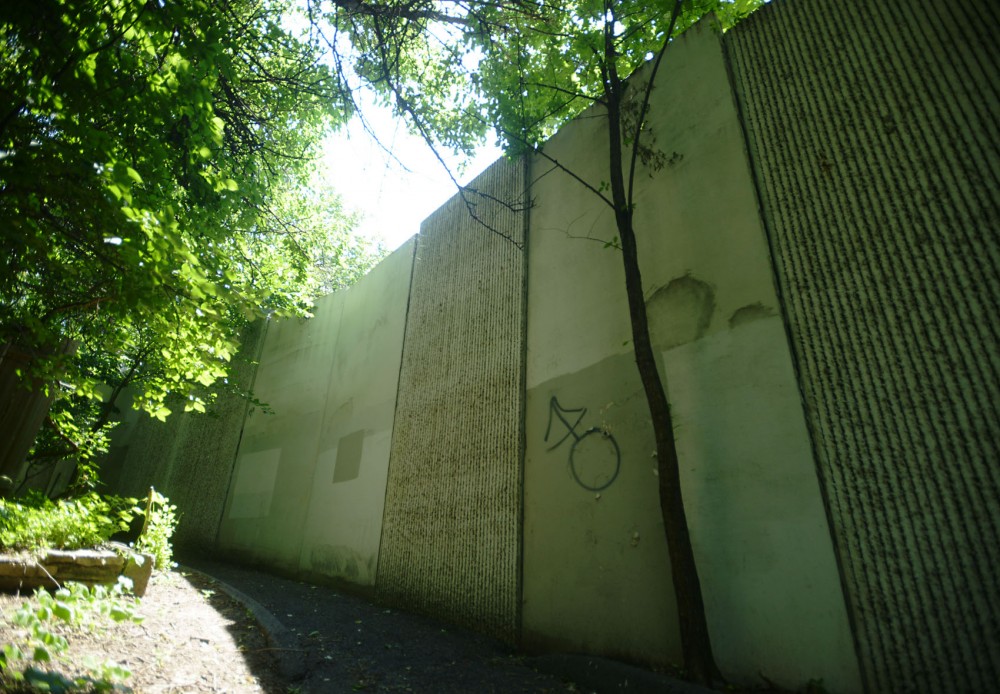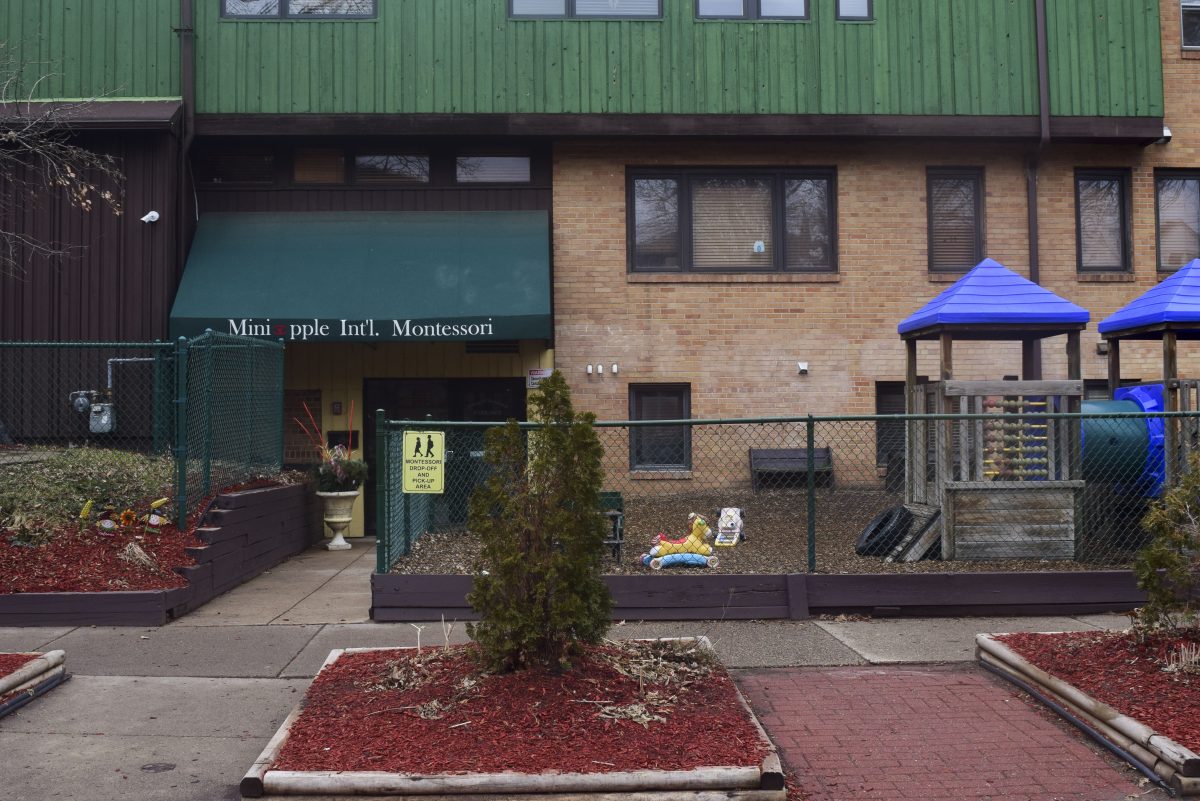A small number of University of Minnesota neighborhood residents and property owners will soon decide whether four noise barriers should be built along stretches of Interstate 35W.
Many say the voting process is unfair and the $3 million walls are almost inevitable. That money, they say, could be better spent improving neighborhood infrastructure.
The voting period for Southeast Como residents started Friday and Marcy-Holmes begins Wednesday. Residents will have 30 days to vote.
“This is a great example of irresponsible spending,” said Craig Janssen, owner of Southeast Como -based Elmwood Properties.
Janssen said officials should instead add storm sewers and streetlights to the neighborhood because the sound walls are pointless.
“I don’t see a benefit for the human race here,” he said.
Voting process concerns
The proposed walls would be part of a $13 million project adding a lane to northbound I-35W and expanding the ramp along Fourth Street Southeast in June 2014.
The Minnesota Department of Transportation evaluates all of its projects’ potential noise impacts, said Scott Pedersen, MnDOT manager for the west metro area.
While the freeway project would only slightly raise noise levels in the surrounding neighborhoods, residents near I-35W already face a decibel level higher than state standards, Pedersen said.
The freeway project would raise the noise level to almost 80 decibels, which is equivalent to the sound of a continuously running garbage disposal. The sound walls would bring the noise level down to the current state standard of 65 decibels.
Under MnDOT voting regulations, property owner votes count for twice as many as resident votes do.
But many property owners eligible to vote don’t live in Minnesota and won’t bother to participate in the decision-making process, said Rep. Phyllis Kahn, DFL-Minneapolis.
Because MnDOT’s default position is to build the walls, Kahn said, it will be almost impossible for concerned residents to fight them.
“The worst thing about [sound walls] is the voting process,” she said. “It’s hard to vote them down.”
At a public meeting Thursday, Kahn said people won’t vote against the walls because they’ll assume the process will be similar to constitutional amendments, where a lack of vote counts as a no. Here, not voting counts as a yes vote.
Marcy-Holmes resident Mike Brothers said more neighborhood residents should be allowed to vote.
“You need a majority to change the status quo,” he said. “I don’t like that it’s opt-out rather than opt-in.”
Brothers said he doesn’t want the walls because they could attract graffiti, like neighborhood utility boxes and railroad crossings have in the past.
Advertising sophomore and Marcy-Holmes resident Mason Widmer said it makes sense that only a small group of residents can vote on the project.
“They’re the ones that would have to deal with it,” he said.
Widner, who isn’t eligible to vote, said he uses the freeway every day to commute to work and doesn’t think the current noise is a problem.
A number of trees along the freeway will be removed if the sound walls are built. Kahn said losing trees will have a negative psychological effect on residents.
“The idea of facing a wall of green trees as opposed to a solid, concrete, probably to-be-graffiti-filled wall is enormous,” she said.
Frustrations with government
Southeast Como Improvement Association President Wendy Menken said residents don’t have enough time to consider the sound wall project.
“This entire conversation was made long ago without our consideration,” she said.
Psychology junior and Marcy-Holmes resident Brian Zetah said he hasn’t heard anything about the sound wall.
Zetah, who isn’t eligible to vote, said he doesn’t think the area around the highway is loud enough to justify a wall that could be an eyesore.
“It looks fine the way it is now,” he said. “If you put up a big wall, that might kind of change it.”
Menken said the voting process is “broken” because people can’t decide how the government will spend money.
“You can just see the disconnect between [officials] and people on the ground,” Menken said.
Janssen, owner of Elmwood Properties, said the project is another example of government offices spending their budgets unnecessarily.
“People in political office are spending money how they want, rather than spending 100 percent on the people,” he said. “When’s the last time someone in the government asked you what you thought of something?”
Prospect Park parallels
MnDOT built a sound wall along Interstate 94 in the Prospect Park neighborhood in 2011.
But the wall actually reflects and amplifies noise rather than reducing it, because part of the neighborhood is on a hill above the wall.
“We told them before they started building that [it] would create a reflected noise problem,” said longtime resident Bob Sykora. “They built it anyway.”
MnDOT commissioned a sound test for the area, confirming the wall increased noise levels in more than 200 neighborhood homes.
Prospect Park representatives are currently negotiating fixes to the wall with MnDOT. They voted Monday to adopt a more gradual approach to also focus on making the wall more aesthetically pleasing.
MnDOT manager Pedersen said sound amplification won’t be an issue for the I-35W wall because the land around it is level.
“I don’t think it’s the same issue,” he said.
Prospect Park residents at the meeting even said they had considered moving because the noise was so loud.
“I know there are people in the neighborhood who are being driven crazy by the noise,” Sykora said.






















![Gwyn, Macy, Daniel, and Nora [pictured left to right] brave the sub-zero windchill on an icy afternoon to skate together in Van Cleve park. The park, located just north of Dinkytown in Como, becomes a popular winter activity hub for students and nearby residents each year when the park’s fields are frozen to create a public ice skating rink.](https://mndaily.com/wp-content/uploads/2024/01/FzDx2ZjdXLtO33r1j1atrf7jrtQtocs9vnp8k2AT-2-1200x801.jpeg)
